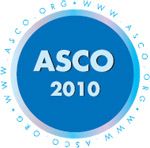CBR gene increases risk of cardiomyopathy in pts receiving lower-dose anthracyclines
It is well known that exposure to chemotherapy or radiation therapy can result in long-term complications for childhood cancer survivors. What is less certain is why some children have to contend with these complications while others do not. Researchers at the City of Hope Medical Center in Duarte, Calif., are one step closer to fitting another piece in the survivorship puzzle: They hypothesized that there is some inherent genetic susceptibility that raises this risk.

It is well known that exposure to chemotherapy or radiation therapy can result in long-term complications for childhood cancer survivors. What is less certain is why some children have to contend with these complications while others do not. Researchers at the City of Hope Medical Center in Duarte, Calif., are one step closer to fitting another piece in the survivorship puzzle: They hypothesized that there is some inherent genetic susceptibility that raises this risk.
Smita Bhatia, MD, MPH, and colleagues found that a particular genetic variant paired with low-dose anthracycline chemotherapy led to a greater incidence of cardiomyopathy in survivors of childhood cancer. In addition, patients without variants of the carbonyl reductase (CBR) gene were still at greater risk if they received higher doses of anthracycline chemotherapy.

SMITA BHATIA, MD, MPH
Carbonyl reductase genes catalyze reduction of anthracyclines to cardiotoxic alcohol metabolites. Polymorphisms in CBR3 V244M and CBR1 G1096A affect CBR activity.
Dr. Bhatia's group examined the potential effects of the CBR3 and CBR1 variants on cardiomyopathy risk. In addition, they sought to confirm that anthracycline chemotherapy was linked to the development of cardiomyopathy in a dose-dependent manner (ASCO 2010 abstract 9512).
The case-control study, in which 121 centers participated, included 165 cases of childhood cancer survivors with documented cardiomyopathy and 323 matched controls with no cardiomyopathy. The study was conducted as part of the Children's Oncology Group's work.
"This is the largest cohort of documented childhood cancer-related cardiomyopathy," noted Dr. Bhatia, who is a professor of pediatric oncology at City of Hope. The participants were diagnosed between 1966 and 2008, with approximately 80% treated after 1981. All study participants provided a blood sample or buccal cells for germline DNA and their medical records for documentation of therapeutic exposures to anthracycline, as well as echocardiographic data.
Primary diagnoses included acute leukemia (n = 164), lymphoma (n = 111), sarcoma (n = 120), and others (n = 93). The median age at cancer diagnosis was 7.5 years; the median time to cardiomyopathy was 7.1 years. The median anthracycline dose in the cases was 300 mg/m2; in the controls it was 140 mg/m2.
The researchers found that among those with cardiomyopathy who had been treated with high doses (> 250 mg/m2) of anthracyclines, the CBR genes had little effect on heart disease risk, which was already high because of the large dose of drug. However, the CBR genes affected cardiomyopathy risk at lower doses (< 250 mg/m2) of anthracyclines. Children who had variants in the CBR1 gene had a 5.3-fold increased risk, and those who had variants in the CBR3 gene had a 3.1-fold increased risk.
"At the highest doses of anthracyclines, the carbonyl reductase gene does not play a major role and patients develop cardiotoxicity, irrespective of their CBR genotype status," Dr. Bhatia said. "We believe that this cardiotoxicity is likely to be dominated by other mechanisms, such as oxidative stress generated by the unmetabolized high doses of anthracyclines. However, at lower doses of anthracyclines, CBR genes play a critical role in modulating the risk of cardiotoxicity."
Oncology Peer Review On-The-Go: Cancer-Related Fatigue Outcome Measures in Integrative Oncology
September 20th 2022Authors Dori Beeler, PhD; Shelley Wang, MD, MPH; and Viraj A. Master, MD, PhD, spoke with CancerNetwork® about a review article on cancer-related fatigue published in the journal ONCOLOGY®.